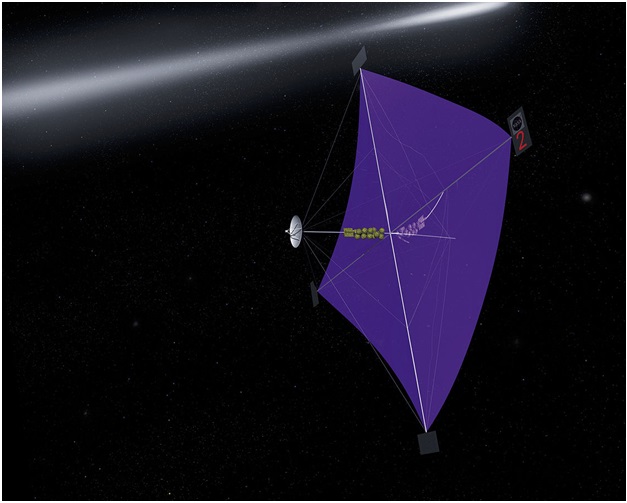(Please read Part 1 before reading this post.)
Yesterday, I talked about the threat to Earth of asteroid strikes and some possible ways of diverting approaching asteroids. Today I am going to continue listing some of the methods that have been suggested for deflecting asteroids that are on a collision course with Earth.
A spacecraft could be sent to rendezvous with the asteroid. The spacecraft would direct an ion beam at the asteroid. If the asteroid was intercepted far enough from Earth, the slight impulse imparted by the ion beam could be sufficient to deflect it from crashing into the Earth.
If a space station with huge lenses and magnifying glasses could be constructed and moved into position, it could direct solar radiation onto an incoming asteroid. Over time, the slight pressure from the solar radiation could change the trajectory of the asteroid.
Given sufficient time and technology, a mass driver could be built on an incoming asteroid. The mass driver could use solar power to fling pieces of the asteroid into space. This would act as an "engine" to change the course of the asteroid. Alternatively, a mass driver on the moon could shoot rocks at an asteroid to deflect it.
A conventional rocket engine could be constructed on an asteroid and used to drive it into a new orbit away from the Earth. One problem with this approach would be carrying enough fuel up to the asteroid to supply the rocket engine.
An asteroid could be wrapped in a thin reflective foil covering that would serve as a solar sail to use solar radiation to change the trajectory of the asteroid.
Several schemes have been proposed that would create a cloud of steam in the path of the asteroid. The resistance of the cloud to the passage of the asteroid would change its course.
A tether with a mass at the other end could be attached to an asteroid. This would alter the center of mass of the asteroid which would affect its orbit and cause it to miss the Earth.
A one square kilometer solar powered array of infrared lasers could be constructed and aimed at the asteroid to deflect it.
If an asteroid contained a lot of iron, it might be possible to construct a huge coil of wire that the asteroid would pass through. This passage would generate an electromagnetic effect which would change the path of the asteroid.
It has been pointed out that if we have the technology to successfully alter the course of an asteroid, it could be used to alter the course of an asteroid to impact with the Earth instead of preventing it from colliding with the Earth. This would make a formidable weapon. It would be more in the line of a doomsday device than a strategic weapon that could be precisely launched at a particular target. As with much technology, it can be use to save or take lives.
So we have many different options that have different costs, technological requirements, space infrastructure, probabilities of success, etc. Even if we have a system that we think could work, it might fail to successfully deflect and incoming asteroid. If we are wrong, it is possible that a deflection scheme could cause the asteroid to break up, multiplying the impacts and not really improving the situation. With luck, it will be decades or centuries before we have to worry about deflecting an asteroid.
NASA artist's concept of a solar sail:
